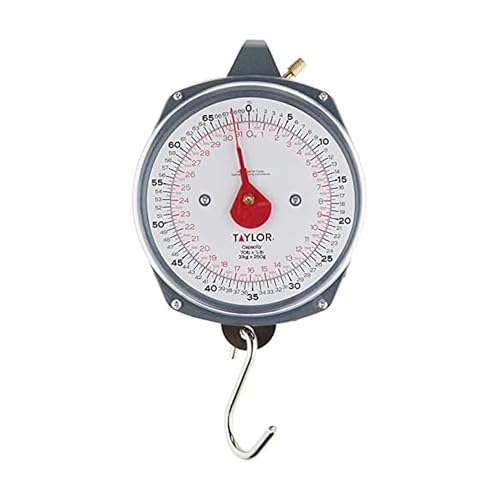Select the appropriate tool based on the maximum weight limit. Most analog weight measuring devices can handle a specific range, typically between 50 to 110 pounds. Confirm that the package weight falls within this range to ensure accurate measurements.
Attach the strap securely to the handle of your bag. Ensure it is tightly fastened to prevent any slippage during the weighing process. A secure grip is crucial for obtaining reliable data.
Lift the bag gently, allowing the device to display the reading steadily. Avoid sudden jerks or movements when lifting; a stable ascent will produce a precise measurement. Observe the needle until it settles, indicating the accurate weight of the item.
Check the reading at eye level to eliminate parallax errors. Viewing the needle from an angle can lead to inaccurate interpretations, so ensure a direct line of sight for the most reliable results.
Once you have the weight, carefully lower the bag back to the ground. Do not drop or release the bag abruptly to avoid potential damage to both the bag and the weighing tool.
For optimal results, check the calibration periodically. If weight readings appear inconsistent, recalibrate according to the manufacturer’s instructions to maintain precision.
Selecting the Right Mechanical Luggage Scale
Choose a model with a clear, easy-to-read dial for precise measurements. Look for scales that can accommodate up to 110 pounds (50 kg) to suit most travel needs. Durability is key; select units made from sturdy materials such as heavy-duty plastic or metal for longevity.
Portability and Design
Opt for lightweight designs to ensure effortless handling. Scales with ergonomic grips enhance user comfort. Compact shapes make them easy to pack or carry in a fitness waist pack, offering convenience during travels.
Calibration and Accuracy
Ensure the scale is calibrated for accurate results. Some models feature built-in calibration buttons; this feature guarantees correct measurements each use. Read customer reviews for insights on performance and reliability to help with your decision.
Understanding the Weight Measurement Process
To achieve accurate weight readings, ensure the hook is securely attached to the item. The balance is designed to measure only when the object is fully stabilized. Displacement from movement distorts the results, so keep the scale steady.
During the weighing, observe the needle closely. Watch for the point where it settles; fluctuations may indicate an unstable hold. Note the weight after a consistent reading appears, as continuous movement can lead to discrepancies.
Pocket-sized weight devices can vary in sensitivity; more robust models often provide heightened accuracy. If possible, cross-check readings with other available weighting systems for precision, especially before significant travel or considerations. Some mechanisms may require calibration, so refer to the manufacturer’s guidelines if anomalies arise.
After securing your weight, always return the gauge to its original position. This practice prolongs its lifespan and maintains operational integrity, enabling reliable measurements in future instances.
Proper Attachment Techniques for Accurate Weighing
Securely fastening the bag to the weighing device is critical for precision. Ensure that the hook is directly engaged with the handle or upper part of the bag. Avoid attaching it to zippers or seams, as these areas may not support the weight correctly and can result in inconsistent readings.
Before weighing, inspect the attachment point to guarantee it’s sturdy. If the bag has multiple handles, select the strongest one to minimize wobbling during measurement. For bags with straps, looping the strap around the hook might provide additional security.
Recommended Techniques
| Technique | Description |
|---|---|
| Direct Hooking | Attach the hook directly to the bag’s main handle for stability. |
| Strap Looping | Ensure the strap is securely looped around the hook to prevent slippage. |
| Weight Distribution | Balance the bag to avoid tilting, which can affect the reading. |
Final Checks
Once the item is attached, give it a gentle shake to ensure stability. If any movement occurs, readjust the attachment method. Always allow the scale to settle before taking the measurement to avoid inaccuracies caused by shifting weights.
Reading and Interpreting the Scale Display
Look directly at the weight indicator to accurately gauge the load. Ensure that the pointer aligns clearly with the weight measurement. This guarantees reliable results.
Key Points to Consider
- Standard weight increments typically include pounds and kilograms. Familiarize yourself with the unit of measurement your device uses.
- Note any movable parts around the dial. These may need adjustment based on calibration requirements.
- Check for zeroing features. Ensuring the scale reads zero before attaching any baggage is crucial for precise readings.
Tips for Correct Interpretation
- Stand still while taking the reading. Movement can cause fluctuations in the display, leading to inaccuracies.
- Inspect the scale after each use for possible wear or malfunction. Regular maintenance guarantees long-term reliability.
- If unsure of the reading, double-check by lifting and suspending the item again, ensuring the pointer remains in the correct position.
For those seeking sturdy outdoor solutions, consider the best windproof patio umbrella for your next gathering.
Maintaining Your Mechanical Luggage Scale for Longevity
Regular cleaning is paramount. Wipe the surface with a damp cloth to remove dust and debris. Ensure the hook is free of rust; apply a small amount of lubricant if necessary to keep it moving smoothly.
Store the device in a dry environment to prevent moisture damage. Avoid exposing it to extreme temperatures, as this can affect accuracy and component integrity.
Check calibration periodically. An imbalance might signify the need for recalibration. Follow manufacturer instructions to ensure precise measurements.
Avoid overloading. Look for the manufacturer’s weight limit and stay within it to prevent damaging the internal mechanism. Persistent strain can lead to malfunctions.
For optimal function, keep the attachment area clear from obstructions. Proper handling will reduce wear and tear. Reference resources on maintenance tips, such as how to clean cat hair from house, which often provide insights applicable to various cleaning and maintenance practices.








